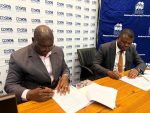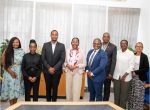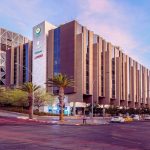Government’s prosaic resolve to revive the ailing Namibian economy will be spearheaded by supportive supply-side policies, public enterprise reform, identifying strategies for unlocking e-commerce and the possibility of using low-cost renewable energy from the envisaged hydrogen industry with a cocktail of ideas that seek to reposition Namibia on a growth trajectory.
Indeed, risks to domestic growth are predominantly in the form of monetary policy tightening globally and high costs of key import items that are likely to remain for the entire forecast period, the Bank of Namibia (BoN) said recently.
“Major central banks in the world continue to tighten monetary policies, a phenomenon that is anticipated to result in a global slowdown in 2023. Furthermore, the war between Russia and Ukraine is likely to continue for longer than expected, and so are the high prices for affected commodities for which Namibia is a net importer, including fuel, wheat, and cooking oil. Other domestic risks include water supply interruptions that continue to affect mining production at the coast, energy challenges in the region, and uncertainty about the effects of climate change going forward,” the Bank said.
However, despite these risks that have seen Real GDP growth projected to slow down to 3.0 percent in 2023 from around 4.2 percent in 2022, President Hage Geingob has said that Namibia’s economic trajectory indicates that the country has entered a period of revival, with green shoots on the horizon and has utmost confidence that to achieve economic emancipation for all, the collective efforts of all are imperative.
This is at the backdrop of Namibia having attracted foreign direct investment worth N$13.2 billion or 7.2 percent of GDP during the first nine months of 2022, primarily driven by equity injections for exploration activities following the offshore oil discoveries.
It is also expected that high FDI inflows are likely to continue in 2023 on the back of oil discovery appraisals, coupled with the commencement of the green hydrogen project feasibility study to the tune of N$2.5 billion.
“Nevertheless, there is still a need to foster broad-based economic growth across all sectors of the economy. Thus, Government will continue to expedite implementation of supportive supply-side policies to lessen constraints to economic activities and facilitate the ease of doing business,” Geingob explained.
He went on to state that government is committed to the reform of Public Enterprises, including the commissioning of the Centralized Ownership Model and the establishment of a Holding Company structure.
Hence, the Namibian Public Enterprises Board Recruitment Guidelines have augmented the process of appointment of qualified and experienced Board Members without political interference.
“During the period under review, we established a Business Rescue Task Force to study our insolvency laws and recommend amendments to support efficient recovery for companies in financial distress. The Task Force carried out extensive research and consultations with experts in both the public and private sectors. The report outlining 23 recommendations and a preliminary implementation plan was submitted and approved by the Cabinet in August 2022. Subsequently, the implementation of these recommendations has begun,” further stated Geingob before going on to say that in addition, after a country assessment to determine our readiness for the Fourth Industrial Revolution, Namibia hosted in June 2022, the first Namibia 4IR Conference, where the public also provided inputs.
“The report and its 13 recommendations were approved by Cabinet in November 2022, and implementation modalities are being finalized.”
In identifying strategies for unlocking e-commerce in Namibia, the Task Force advised positioning Namibia as a commercial jurisdiction of choice for International Payment Providers such as PayPal.
“This will enable our creative industries and many young people, to access payments from digital platforms such as YouTube and Amazon locally. Moreover, we continue to implement the SME financing strategy as a vehicle to stimulate economic growth and employment creation,” said Geingob.
Consequently, an amount of N$40 million was applied for through commercial banks by the end of September 2022. The Development Bank of Namibia approved N$13.3 million to support six sectors, sustaining 35 SMEs and creating 247 jobs across nine regions. Additionally, the Ministry of Finance and Public Enterprises transferred N$8.5 million to the Development Bank of Namibia to roll out the Mentorship and Coaching Programme.
“Furthermore, we launched an Application as a central repository for micro, small and medium enterprises to list their goods and services, and encourage digitalization. To date 791 small businesses are listed on the database,” added Geingob.
He also noted that this year the Ministries of Mines & Energy, and Industrialization & Trade, will conduct feasibility studies to explore the possibility of using low-cost renewable energy from the envisaged hydrogen industry, with the objective of creating a green manufacturing hub anchored by gigawatt installations (1000 Mega Watts).
“We will investigate the possibility of using the industrial parks in Walvis Bay to accommodate these Green industrial projects. Given Namibia’s abundant critical mineral deposits that are needed for the energy transition, such as lithium and rare earths, the Government will explore the possibility of using this low-cost green energy to add value to our raw materials. This includes the possibility of refining iron ore in Namibia, as we look to establish a billion-dollar iron ore processing facility,” he said.










